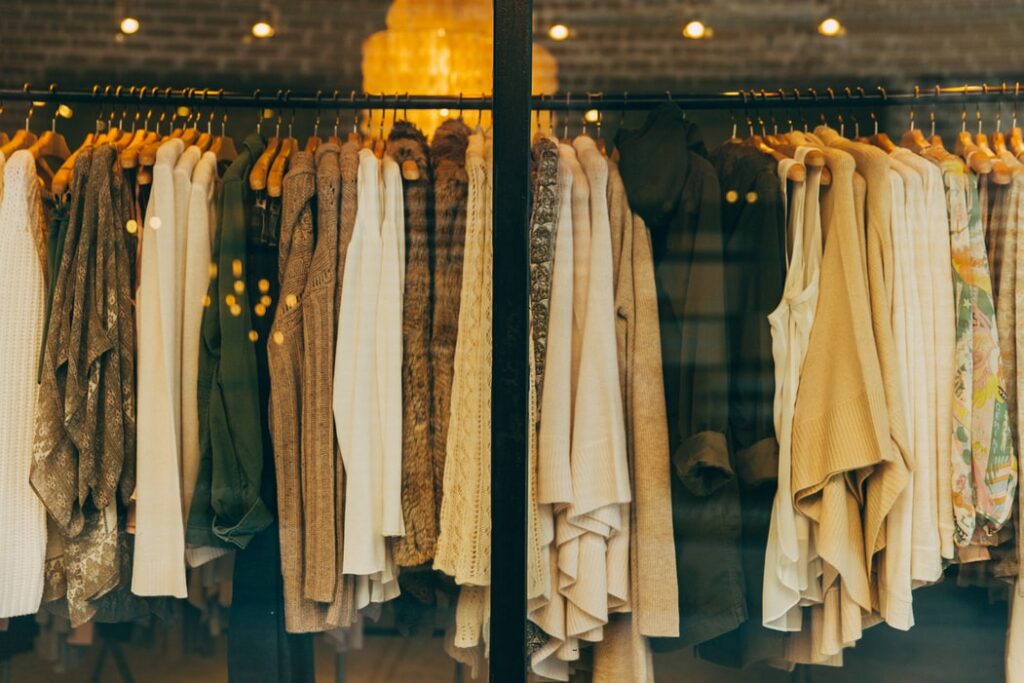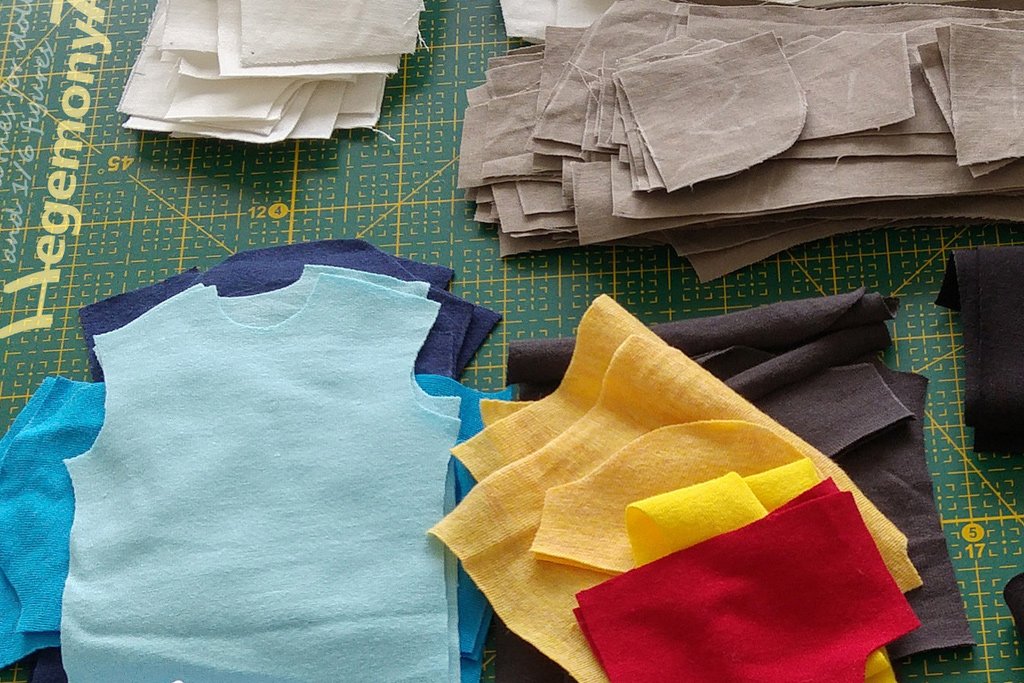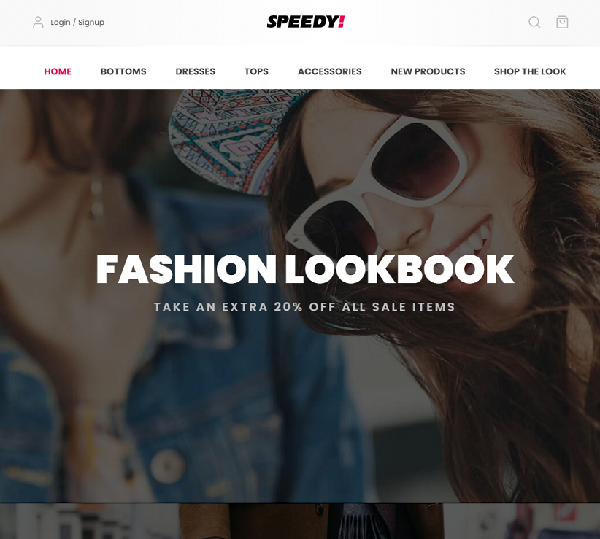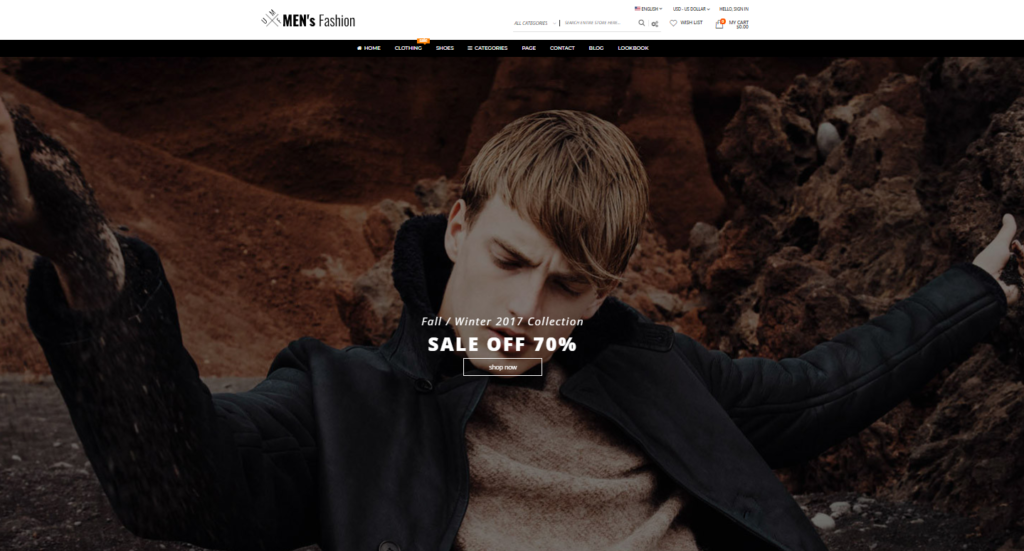Due to the rapidly increasing demand for aesthetics, B2B fashion eCommerce has made a great leap and quickly become one of the most popular business industries today. Coming after that trend, more and more B2B merchants embark on this industry to soar their profitability.
We’ve received tons of requests on building a Magento B2B fashion website; therefore, this article will clarify the primary steps to develop a wholesale fashion website and tips to run it productively.
Let’s glide down and see what your site is lacking!
Steps to Build A Standard B2B Fashion Website
Table of Contents
Step 1: Pick A Fashion Brand Niche
B2B fashion eCommerce is in vogue, which entails the advent of numerous fashion niche choices. Choosing a suitable niche matching your resources and finance facilitates you to tailor your business plan intimately to potential corporate customers and position your online store in a unique way.
Instead of jumping immediately into building a fully-equipped B2B website, store owners have to decide which clothing & B2B apparel eCommerce niche to operate in.
Once you manage to define fashion niches for your B2B eCommerce business, you will be able to explore more into 2 aspects: customers and products.
First, the more specific and deeper your B2B fashion eCommerce niche is, the higher your chance of getting closer to the market will be since this supports prospect identification and segmentation.
Besides, understanding the target audience helps you organize your product list suitable for them, minimize the competition and build up customer engagement.
DIG DEEPER into Magento B2B experience to know which factors are affecting your customers’ buying decisions.
For its importance, you may wonder how to choose the best-fit niche for your B2B fashion eCommerce store. Make sure to answer all of the following questions:
- Is the chosen niche unique enough to make your B2B fashion website stand out from existing wholesale companies?
- Which is the B2B fashion eCommerce niche that strikes you strongly?
- Are you capable of providing that B2B fashion niche?
- Whether you can add value and/or position yourself as an authority?
- Does the niche have earning potential?
Step 2: Decide Products for Your B2B Fashion Ecommerce Business
As soon as you spot a fashion niche, it’s time to choose which products would be supplied. Although there is a forest of options within the chosen niche, you should consider carefully and opt for a cost-efficient product line to protect your budget and competitive edge.
Sports or feminine clothing? Luxury footwear or tailored handbags? Depending on your selling ability (because B2B business often involves bulk order placement) and business vision, you can determine products to be sold on the site.
For those building their B2B fashion eCommerce site the first time, it’s wise to start off small and steady, and then branch out your lines.

Let’s practice the following actions to raise your success rate:
1. Start Small
Due to financial limitations, you should deploy your site development project at a small and minimal scale. Not only does the overexpansion of apparel products charge merchants extra fees poured into every step of building a site, but it also acts as a deterrent to your launching stage.
2. Think Ahead
Unlike other industries, fashion and clothing fads are constantly changing. So, to start safe, you should consider selling stable products, which can be easily adjusted to ever-changing styles, like T-shirts, bow ties, or sportswear.
However, if you have business goals attached to mainstream fashion, make sure to plan adaptations for inconsistent fashion patterns.
After all, there will always be unexpected changes in the clothing industry, especially when you provide a huge number of goods to B2B customers; therefore, success depends on your ability to map out and be elastic in coping with alterations.
Step 3: Choose the Best-fit Business Model for Your B2B Fashion Store
Now that you have an idea of your B2B fashion eCommerce niche and the products you want to sell, it’s time to choose a business model matching your goals. Here we suggest 3 common types of business models that online clothing and apparel stores fall into:
- Print-on-demand
- Custom cut-and-sew
- Private label
Frankly, each model has its own pros and cons and you should consider your overall objective, budget, and skills to decide which to be applied.
1. Print-on-Demand
Coming first in this list, the Print-on-Demand business model is deployed in the easiest and most cost-effective manner, which will suit B2B fashion e-commerce businesses starting with small or no cost stable supply. They estimate that custom T-shirt printing will reach $10 billion in sales by 2025.

A good example of this is PixePrint. They’ve evolved into a B2B print-on-demand brand in France, offering a variety of promotional printing services and products to serve large companies’ advertising. Currently, their website is operating on the Magento platform.
Nevertheless, the biggest drawback of this model is that print-on-demand stores often gain lower profit margins and bring fewer options of branding tags, labels, and other finishes, compared to other B2B fashion eCommerce models.
2. Custom Cut-and-Sew
Our second recommendation is for merchants with a strong branding plan and unique designs. In other words, you have the economic potentials to cover everything from design to production and fulfillment.

To develop a B2B fashion eCommerce store under this form, you need to be able to supply a large number of goods in a limited time; so make sure to prepare yourself with a solid resource.
This business form allows fashion worms to freely create and launch unique and personalized products. Although it enhances diversity in the fashion industry, custom cut-and-sew entails a load of cumbersome management tasks and higher responsibilities for connecting with third parties like pattern-makers, manufacturers, or fabric suppliers.
Store owners must put tons of effort, time, and money into their initial investment when building a B2B fashion eCommerce website.
3. Private Label
Fortunately, if you want to build your own brand at a more reasonable price, the private label business model would be the perfect choice since it stands at the middle point between print-on-demand and cut-and-sew. It allows merchants to put more customization work than the former but less financial requirement than the latter.
Still haven’t caught the idea of this model? Operating a private label company means that you purchase blank or label-less fashion items and then add your custom design, label, or tag before releasing them to the B2B apparel eCommerce marketplace. This appears to be a lot more cost-effective than print-on-demand, as store owners can negotiate better rates for bulk ordering.
Unfortunately, you will have to deal with fulfillment and inventory management yourself.
Step 4: Sketch Your B2B Fashion eCommerce Business Plan
After choosing a B2B fashion eCommerce business model matching your potentials, the next step to take when building your website is to work out a business plan that contains the following impacting factors:
- B2B fashion marketplace: drill down your prospects into segmented markets;
- Products: clarify their unique selling points;
- Top competitors: list their strengths and weaknesses clearly;
- Business model/fulfillment strategies;
- Fashion brand identity.
Digging deeper into the B2B fashion eCommerce world, it’s a must for any merchants to address questions such as where the traffic (leads) will be coming from and what will make your products prominent.

There’s no use drawing up an ambitious macro plan that neglects the B2B pricing step. Quickly research the market and come up with the price per product and price per customer with these major cost considerations:
- Equipment, fabric, materials;
- B2B web development, hosting, themes, extensions, and other web-building costs;
- Product designs;
- Production cost per product, including samples;
- Labor and transportation.
Once you have a rough cost estimation of building a B2B fashion ecommerce business, you will be able to work out your margins. One piece of advice, at this stage, is that wisely look at the average prices of your competitors to make sure you aren’t pricing yourself right out of the market.
Step 5: Start to Create Your B2B Fashion Website
As soon as you’ve outlined the path and got the blueprint in hand, what are you waiting for? Think about turning your B2B fashion website building plan into artwork right away!
This is a complicated and brainstorming process that every online store owner must go through. We will outline a few main points in developing a B2B website, as there are already many detailed tutorials that you can refer to.
First, you need a domain to prove your fashion brand presence on the Internet world.
Next, based on your long-term goals, business nature, and development path, choose a reputable platform that can handle the workloads and huge database of a B2B fashion eCommerce business. For companies with a constant development orientation and reputation expansion, Magento is a perfect choice. It performs beyond expectations in terms of increasing brand awareness, scalability, and generous adoption of customization works.
Then, forget to pick a responsive theme. This is a vital step because themes will catch customers’ eyes from the first moment and help speak your business message louder and clearer. Any inappropriate choice can cause a bounce rate to soar. Especially when you work with fastidious business customers who are limited in time and have a high concern in product pricing.

Still confused about choosing an eCommerce platform? CHECK B2B eCommerce platforms to find the right one!
Step 6: Integrate Must-have B2B Features into Your B2B Fashion eCommerce Website
Yes. No matter how fancy website design you have, you still make sure that your online store includes all B2B features needed to serve corporate customers’ demands such as personalization, security priority, custom pricing, bulk ordering, and many more.
If you don’t infuse your website with essential B2B features, your website will only be adequate to serve B2C customers.
We have listed here the main features that any fundamental B2B fashion eCommerce store should have:
- Access restriction: You need to limit access to some resources on the site. Remember to allow a few authorized audiences to access valuable content, categories, products, which will protect your competitive advantage and support customer segmentation.
- Data collection: A customer database is a treasure determining the success of any business. Make sure you create unique and informative registration forms for B2B customers and perform smart management work on your backend.
- Bulk order placement: Business customers tend to place extremely large quantities of goods at once. So your B2B fashion eCommerce website should have a feature that speeds up their product search and checkout process. Features like fast order, adding mass to cart are great suggestions.
- Product presentation: When you operate in an industry that values display factors like fashion, presenting compelling products is almost the unspoken rule for industry success. Therefore, in addition to refining content, try to take the most attractive product photos and upload them on the product page. Besides, for complex products with different colors and sizes like configurable products, you should have the ability to neatly display those parameters.
- Pricing: B2B transactions usually have to go through a negotiation process, and some products will have different prices for different customer groups; therefore, the prices of B2B fashion eCommerce businesses are diverse and vary based on loyalty level and dealing skills. Don’t forget to include a B2B functionality that simplifies the sellers’ pricing stage and the buyers’ quoting.
- Order fulfillment: Payment methods and delivery services are the next factors you should pay attention to. Make sure that your B2B fashion eCommerce website is capable of offering various payment options to customers; at the same time, let them savor pleasant delivery policy and service. In this way, corporate buyers will appreciate your professionalism and feel bound to return.
- Long-term partnership: More than just an ordinary individual sales relationship, the return of corporate customers is high as long as your products are of good quality and easily sold out. To best serve their return, your B2B fashion website needs to be able to comfort repeat orders, support interval purchasing plans, and shorten refund delays.
Step 7: Launch Your Online B2B Fashion Website
Now, to pay off all hard work, it’s time to launch your B2B fashion eCommerce store. Steal the following launching tips for the best preparation!

1. Outline Your Launching Strategy
Your strategy should include tasks such as proofreading and testing your whole B2B website functionality before launching. Try to answer some questions like: Are you going to run a promotion or hosting a webinar? What about filtering your customer database to blast their mailbox? No matter what strategy you decide on, have it in place to roll out step by step as you launch.
2. Create Social Accounts
Don’t forget to register accounts on social channels to appear professional in front of corporate customers! In fact, have these active – with content – before your big launch. This will enable you to run your social ads with the launch and market your new store to an already growing following.
3. Have Your Email Marketing Strategy and Automation in Place
Make sure all your automation emails are set up and tested and that you have an email marketing strategy planned out for your first three months.
4. Make Sure Your Google Analytics and Google Ads Accounts are Set-Up
Next, you will want to ensure that you have set up your Google Ads and Google Analytics accounts before launching. This will enable you to track traffic to your store during your launch in real-time and drive traffic through SERP ads.
Step 8: Execute Sales & Marketing Strategies to Raise Traffic
The last step? Bringing traffic to your newly-launched online B2B fashion website. The biggest traffic drivers are email marketing, PPC, content marketing, social media guest posts on popular blogs, and influencers.
For a new store without a brand name, established SEO, or email database list, you will want to concentrate on Google and social ads – particularly Facebook and Instagram – to get potential shoppers to your new store. Here are the 5 Best Ways to Increase eCommerce Traffic to get you started.
Although traffic campaigns are the most important factor in the success of your online clothing business, it doesn’t need to be as daunting as it sounds.
With apps such as Traffic Booster, you can hand over the hard work, so to speak, so that you can concentrate on fulfilling your new orders and generating eCommerce traffic with real-time ad optimization.
Tips for B2B Company Success in the Fashion Industry
Stir Up the First Impression
Utilize Big and Bold Images
It’s no secret that successful fashion eCommerce requires excellent photography. Most stock images simply don’t cut it anymore. Hire a professional fashion photographer to take high-quality photos of your inventory that go beyond the simple product shot to tell your brand story. Your store will outshine your competitors and the ROI will be well worth it.
Keep Everything Transparent on Site
It may go without saying, but keeping your fashion eCommerce website clean is critical if you want visitors to continue browsing (and hopefully click the “buy now” button). Your user interface has to be impeccable, as does making the overall user experience as simple and interactive as possible.
With so many other options, a buyer who’s ready to pull the trigger may leave for a competitor’s site because viewing product specs is difficult, and reviewing checkout information is confusing.
Be Responsive On All Devices
If you’re seeing 25-30% of your customers coming from mobile devices like smartphones and tablets, consider embracing responsive design for your website. They’re far more likely to browse your site on their tablet or smartphone on the go, so your fashion eCommerce site needs to be easy to read and interact with on any device.
Enhance Your Competitive Edge
Get Pricing Right
After everything you’ve done to get potential customers to purchase a product, the last thing you want to do is lose them because a competitor has a slightly lower price. Perform meticulous research on pricing, and always offer a bonus coupon or future promotion opportunity to give them the confidence to keep typing in that credit card number.
Partner With the Right Businesses
Smart partnerships are always important when it comes to developing a successful fashion website. Build relationships with key influencers and bloggers who can be invaluable brand ambassadors for your eCommerce site.
Start by reaching out to well-known reviewers who will lend a quote to the quality of your product, and develop relationships with industry websites that may allow you to post guest blogs and/or be one of their featured fashion sites.
Invest in B2B Marketing Strategies
Do SEO Properly
Search engine optimization (SEO) is another critical component of your fashion eCommerce strategy.
After all, if it’s difficult to find your website in the first place, how do you really expect to make sales? Work with an SEO consultant to make sure the copy on the page is optimized for every product, in addition to the meta tags that give search engines the information they need to properly index your product pages.

Tell Stories
Rather than just writing plain product descriptions, create vibrant stories that help your customers better imagine owning your product. For example, change “a gorgeous evening gown perfect for any party,” to “Picture yourself as the ‘it’ girl at your next extravagant party by wearing this elegant black and white dress that will make you the belle of the ball.”
Raise Customer Retention
Offer Dedicated Customer Support
Nothing frustrates a customer more than poor customer service. If you make returning items difficult, customers are likely to buy from a competitor the next time around.
According to the Wall Street Journal, about a third of all Internet transactions are returned. If possible, have customer service agents available around the clock to the field and resolve customer inquiries. Great customer support can significantly shorten the sales cycle and keep your customers coming back for more.
Give Customers a Reason to Come Back
Speaking of keeping customers coming back, create and execute an email marketing campaign that delivers a new promotion into their inbox each week. Your fashion eCommerce store stays top-of-mind and, if different promotions are segmented to the right customer lists, you can count on more sales—not to mention a high ROI.
In conclusion
Starting a B2B fashion e-commerce business is not a simple task, but quite a complicated process. You need to go through all of these above steps – do it by yourself and hire an agency to develop a B2B website full of necessary functions, then do a lot of marketing and sales activities to generate customers and revenue.
If you want to build a B2B fashion webshop, don’t hesitate to talk with us. We listen to your story and resolve every requirement as soon as possible.
BSS Commerce is one of the leading Multi-platform eCommerce solution and web development service providers in the world. With experienced and certified developers, we commit to bringing high-quality products and services to optimize your business effectively.



